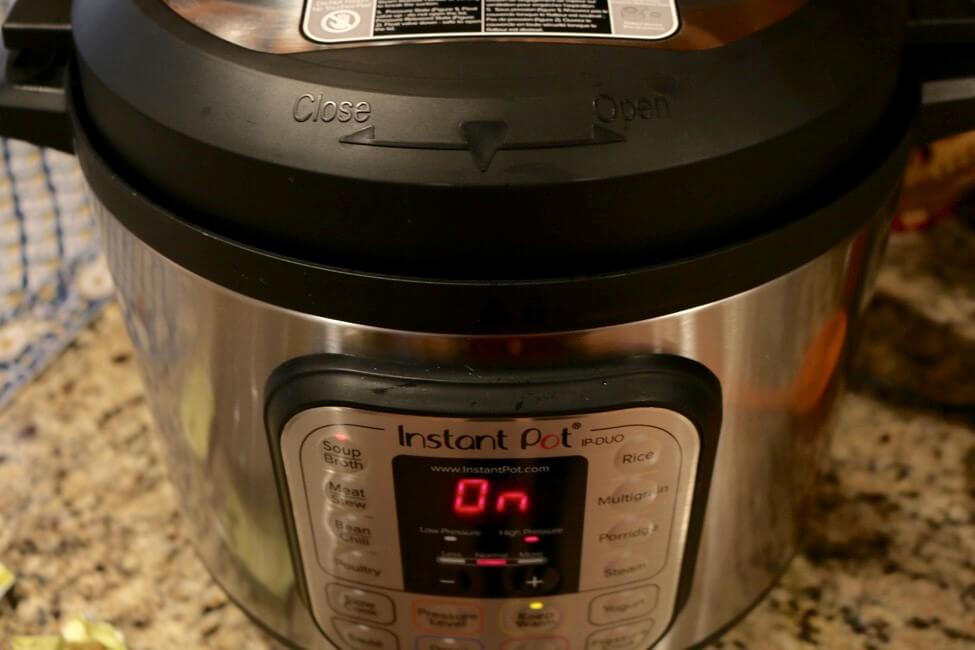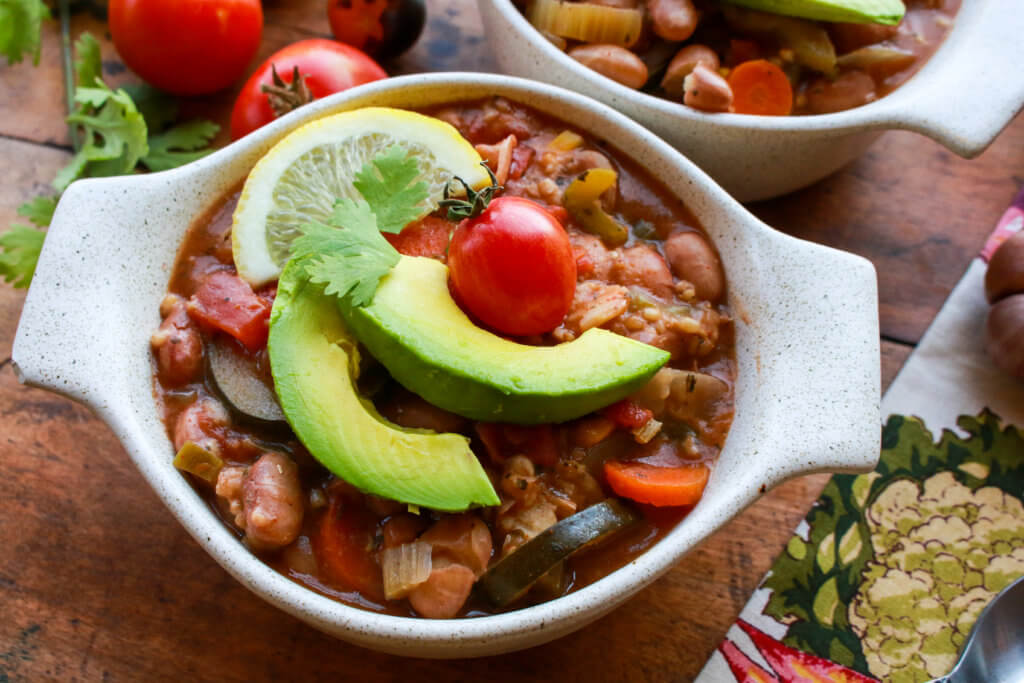How to Use an Instant Pot to Cook Pulses

Learn how to use an Instant Pot to cook pulses—dried beans, lentils, peas—the easy, healthy, fast way with this expert guide.
Chickpeas, lentils, kidney beans, and black-eyed peas are some of my favorite foods. In the pulse family, which includes dried beans, peas and lentils, these plant foods are not only delicious and versatile, they are great plant-powered sources of protein, as well as fiber and essential vitamins and minerals. That’s why I include pulses in my diet every single day. But, if I don’t have my pantry stocked with canned varieties and I forget to soak them overnight, pulses may not make it on the menu on a super busy weekday. And that’s why the Instant Pot is a great tool for cooking up pulses lickety-split. This handy device means I can turn dried beans, peas, and lentils into tender, ready-to-eat goodness in about 20 minutes—no soaking the night before required. If I want a one-pot meal, I simply toss all of the ingredients into my Instant Pot, and dinner’s on the table in that same 20 minutes!

Instant pots, a seven in one multi-functional cooker that can serve as a slow cooker, pressure cooker, pot, baking container, rice maker, Dutch oven, and even yogurt maker, have been all the rage the last few years since they are so versatile and easy to use. This kitchen tool can also replace other cooking equipment, like a slow cooker and rice cooker, clearing up counter and cabinet space and reducing the need for purchasing extra items. The best part about this pot is how fast it works, especially during the week when time can be tight. When it comes to cooking pulses, the Instant Pot is truly meal changing.

Benefits of Instant Pots for Pulses
Not only will an Instant Pot save you time preparing meals with pulses, this tool has so many great benefits. Of course, the main benefit is time—you can literally skip the step of soaking your pulses overnight—which can be the biggest barrier cooking with dried beans. Another benefit is that the pot retains more vitamins and minerals in your pulses, because the device allows ingredients to retain more water, which can hold water soluble vitamins that tend to leech out of food when it is boiled in water on a conventional stove top. Also, the Instant Pot cooks food evenly and deeply, reducing the amount of oxygen exposed to the food item. When your beans are not in contact with oxygen, they will retain more of their vitamins and natural color, and look more appetizing.
Another bonus is that the Instant Pot can eliminate harmful microorganisms that are potentially found in foods, since the pot boils past 202 degrees Fahrenheit. It can also help sterilize tools for canning pulses and other foods. Not only does it sterilize items, the Instant Pot can kill off naturally occurring toxins in food, such as aflatoxin, a mold-based mycotoxin that may be found in pulses that have been improperly stored.

Tips For Cooking Pulses
When it comes to cooking pulses in an Instant Pot, there are some helpful tips to know before you start to make a delicious chickpea curry or my black-eyed peas and greens. First, the cook time is not how long it will take your beans to cook, but instead indicates the duration of time it takes the pot to go through heating, pressurization, cooking, depressurization, and keeping food warm. Also, when cooking dried beans, the pot should not be filled over the half mark line. And remember to use sufficient liquid to cover the beans before cooking them. An Instant Pot can turn dried (or soaked) beans into a delicious dish in no time, but if you want to save even more time—and increase the digestibility of your beans—you can presoak them, then drain off the water before cooking in the Instant Pot.
While you can certainly just press the “Bean/Chili” setting on your Instant Pot to cook beans, you may want to finetune your cooking time to get more precise results. The cooking time guide below can help guide you based on the type of bean you are cooking. Remember that cooking pulses can be tricky—you want them cooked to a tender stage, as uncooked beans may not be pleasant, but in some recipes you may want them to have a firm surface with creamy interior without over mushiness. So, many of these cooking times are approximate, and it may take longer to cook to achieve the desired result. When it comes to adding the right amount of water, for beans and chickpeas use 1 cup water for every 1 cup of soaked beans or chickpeas or 2 cups of water for every 1 cup of unsoaked beans or chickpeas. Lentils and peas do not need to be presoaked. Use 2 cups of water for every 1 cup lentils or peas. A good rule of thumb is to make sure dry pulses are covered with 2 inches of water.
Instant Pot Pulses Cooking Time Guide
Follow this general pulse cooking guide to get your beans cooking! Note that cooking pulses may be variable, and require a bit more time to achieve desired results.
| Dried Beans, Legumes, Lentils | Dry Cooking Time (minutes) | Soaked Cooking Time (minutes) |
| Black beans | 20-25 | 6-8 |
| Black-eyed peas | 20-25 | 4-5 |
| Chickpeas (garbanzo beans) | 35-40 | 10-15 |
| Cannellini beans (white kidney beans) | 35-40 | 6-9 |
| Kidney beans, red | 15-20 | 7-8 |
| Lentils, green and brown | 8-10 | n/a |
| Lentils, red, split; yellow, split | 1-2 | n/a |
| Lima beans | 12-14 | 6-10 |
| Navy beans | 20-25 | 7-8 |
| Pinto beans | 25-30 | 6-9 |
| Peas | 16-20 | 10-12 |
| Soy beans | 35-45 | 18-20 |
Source: InstantPot.com
Depending on where you live, you may want to adjust your cooking time to your altitude, especially if you are located at high altitude. Below is a table to help you determine how much extra cooking time to add to your pulses.
Altitude Cooking Adjustments for Instant Pots
| Altitude | Cooking Time |
| 3000 ft | + 5% |
| 4000 ft | + 10% |
| 5000 ft | + 15% |
| 6000 ft | + 20% |
| 7000 ft | + 25% |
| 8000 ft | + 30 % |
| 9000 ft | + 35% |
| 10,000 ft | + 40% |
| 11,000 ft | + 45% |
| 12,000 ft | + 50% |

Written by Michelle Naragon, dietetic intern with Sharon Palmer, MSFS, RDN
Photos by Sharon Palmer, MSFS, RDN
Main Image: Instant Pot Black-Eyed Peas and Greens
For more pulse recipes you can cook in your Instant Pot, check out the following:


